In previous articles I have outlined the trends associated with average micronaire (mic) values for the Arizona crop over the past 12 years (e.g. Arizona Cotton Comments, 20 November 1999) and discussed possible relationships among mic values, yield, and crop fruiting patterns. In this article I will review the beltwide trends associated with yield and micronaire for Upland cotton in relation to Arizona. It is important to consider the trends in Arizona in relation to other cotton producing regions in the U.S. and to identify any similarities in the national or regional patterns.
One of the principle components that contribute to cotton yield is individual fiber weight, which can be directly related to fiber micronaire. All other factors being equal, increasing mic will tend to increase yield as well. However, in recent years while we have experienced trends toward increasing micronaire, we have also had much discussion in Arizona about a possible "yield plateau" and the difficulties associated with achieving high yields with consistency. This has also been a common issue of critical importance in most other parts of the U.S. cotton belt. Figure 1A shows the average yields for Upland cotton in the U.S. from 1975 to 1999 with similar data for Arizona in Figure 1B. The patterns associated with overall U.S. cotton yields and those from Arizona are similar. In general, we can see that 1987 was a very good year in Arizona and beltwide, but since then yields have tended to plateau or perhaps even decline. Figure 2A shows average micronaire for the entire U.S. crop from 1975 to 1999. The trends associated with average mic on a beltwide basis are clearly increasing. In Arizona, general increases in average mic were experienced in approximately 1993 and again in 1996 in relation to long-term trends (Figure 2B). A similar trend was experienced across the entire U.S. cotton belt (Figure 2A).
In Figure 3 the overall distribution of mic values for the entire 1999 U.S. (Figure 3A) and Arizona (3B) Upland cotton crop is presented. The mic distributions in Figure 3 are clearly skewed toward higher values with a peak approaching 5.0 and rapidly declining at a mic > 4.9. In Arizona, the peak in distributions are >5.0 mic. One might conclude from these data that varieties have been bred and developed with a greater propensity toward higher mic fiber and a distinct avoidance of fiber > 4.9 as seen from the sharp decline in mic distributions above that level from the beltwide data (Figure 3A).
After a review of this information, there appear to be similarities in the relationships associated with mic and yield between Arizona and the rest of the U.S. cotton belt. One common link between Arizona and other segments of the U.S. cotton belt are the varieties being marketed and grown. If the common Upland cotton varieties in the U.S. are being bred with higher mic tendencies (as shown in Figures 2 and 3), their production in an environment conducive to high mic (such as the lower elevations of Arizona) should be expected to result in a higher probability of producing high mic fiber. This does seem to be occurring.
In future articles I will address important management factors that we might consider in relation to producing optimum yields with satisfactory mic values (< 5.0) given the currently available varieties.
Figure 1. US (A) and Arizona (B) yield trends.
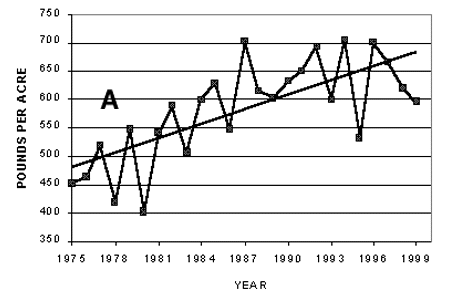
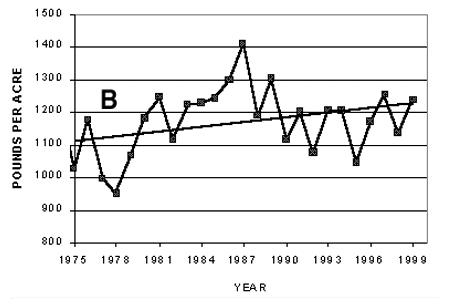
Figure 2. US (A) and Arizona (B) micronaire trends.
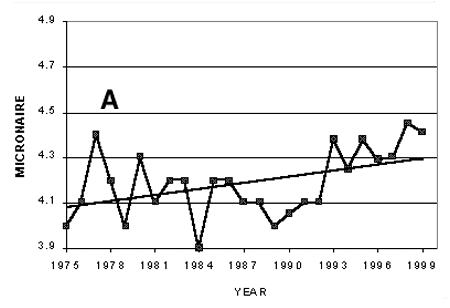
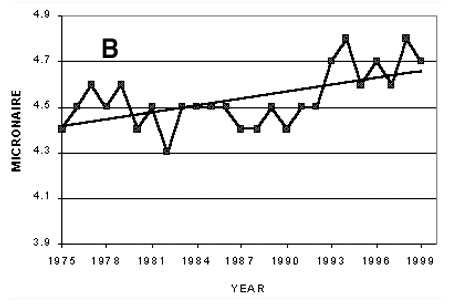
Figure 3. Percent of samples in micronaire categories for US (A) and Arizona (B), 1999 crop.
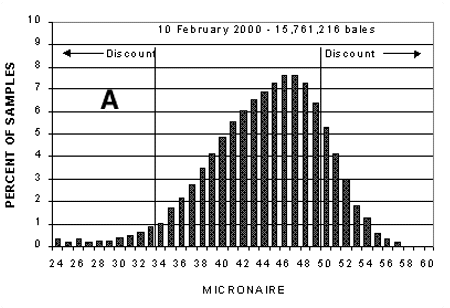
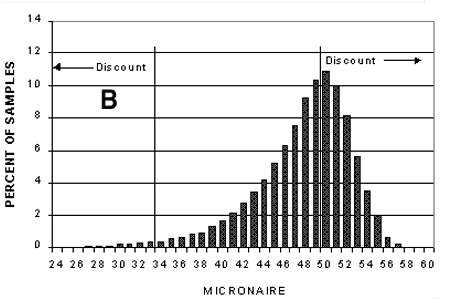
Issued in furtherance of Cooperative Extension work, acts of May 8 and June 30, 1914, in cooperation with the U.S. Department of Agriculture, James A. Christenson, Director Cooperative Extension, College of Agriculture and Life Sciences, The University of Arizona.
The University of Arizona is an equal opportunity, affirmative action institution. The University does not discriminate on the basis of race, color, religion, sex, national origin, age, disability, veteran status, or sexual orientation in its programs and activities.
Any products, services, or organizations that are
mentioned, shown, or indirectly implied in this web document do not imply
endorsement by The University of Arizona.
Information provided by Jeffrey C. Silvertooth, silver@ag.arizona.edu
Extension Agronomist - Cotton, College of Agriculture, The University of Arizona.
Material written 28 February 2000.
Home | Cotton | Advisories
document located at: http://cals.arizona.edu/crops/cotton/comments/feb2000cc.html
Copyright © 2001 University of Arizona,
College of Agriculture and Life Sciences
Webmaster: Al Fournier (acis@ag.arizona.edu)